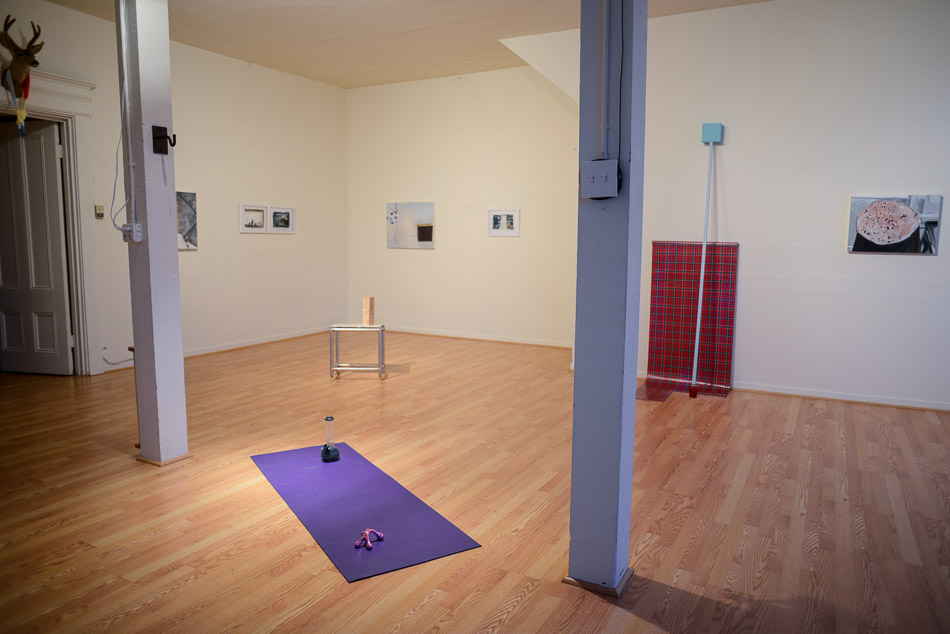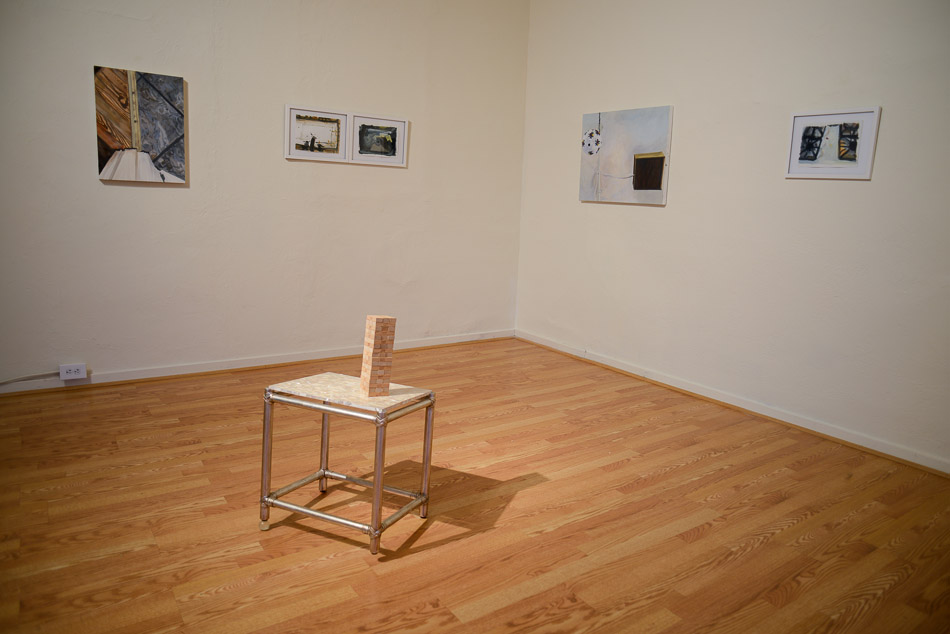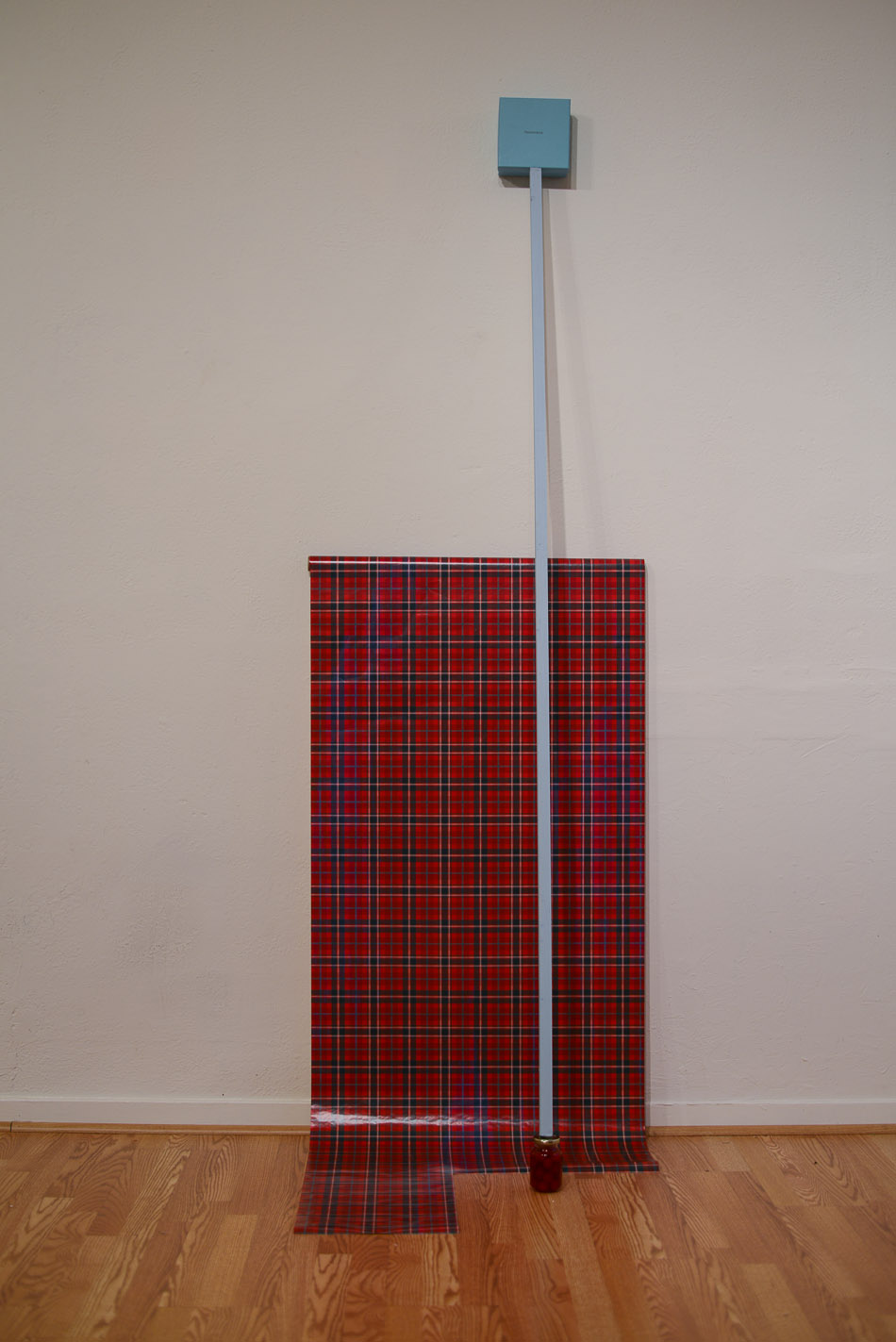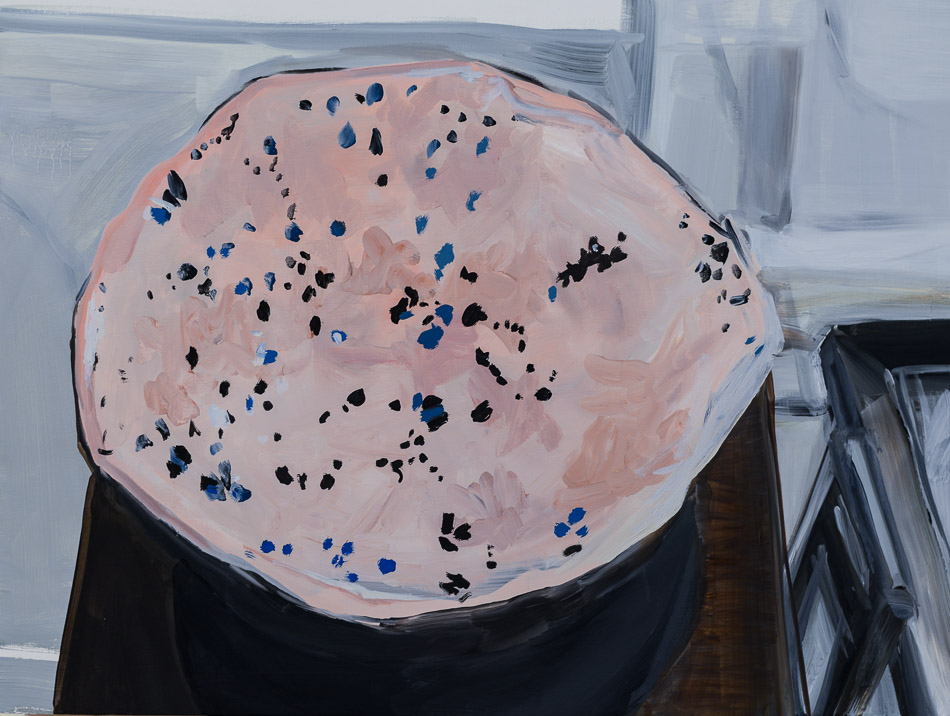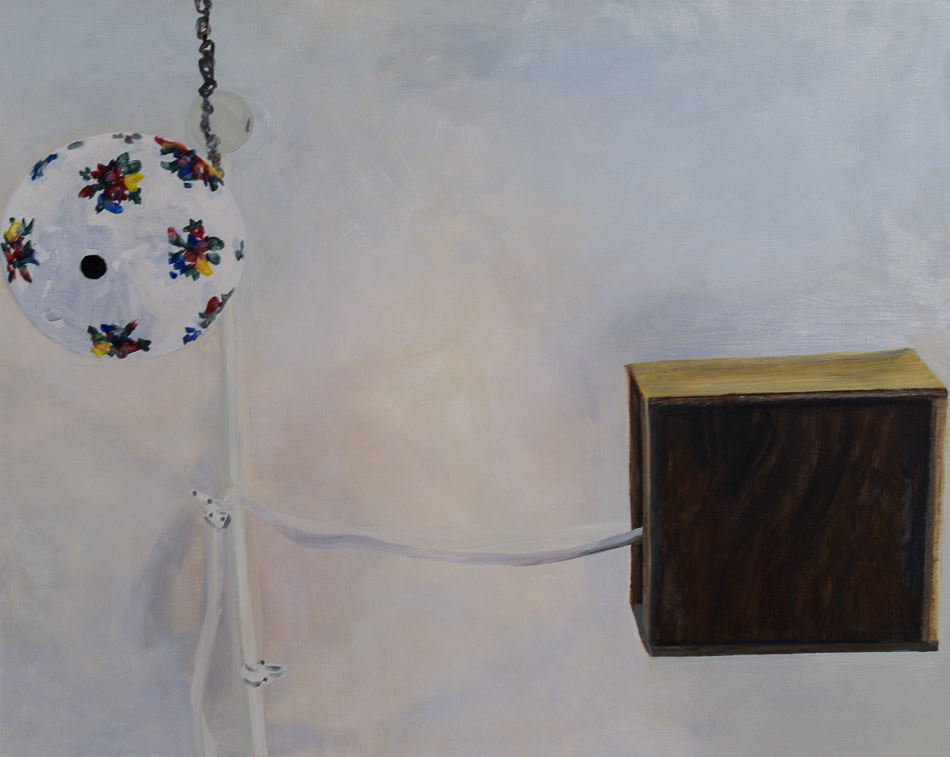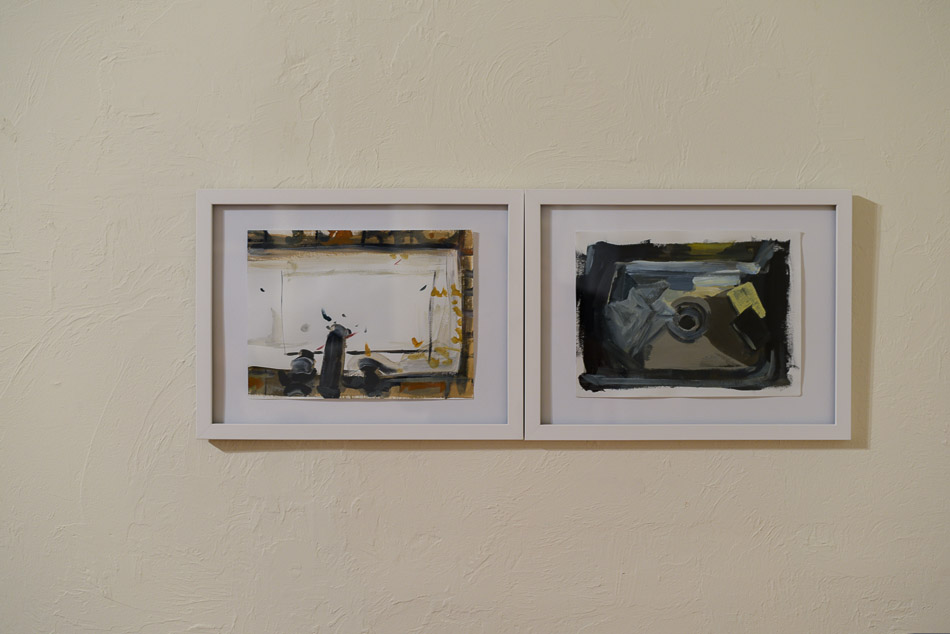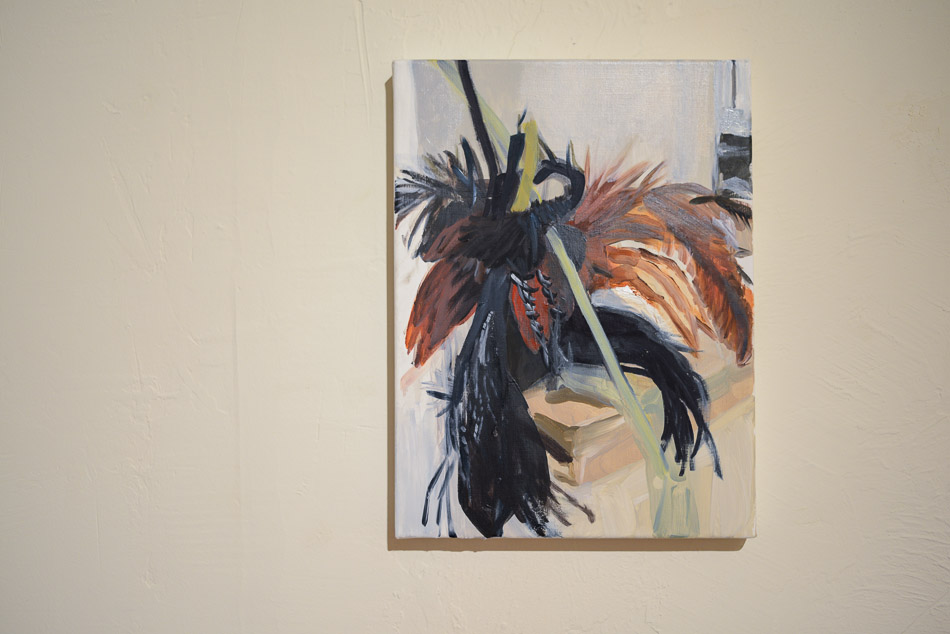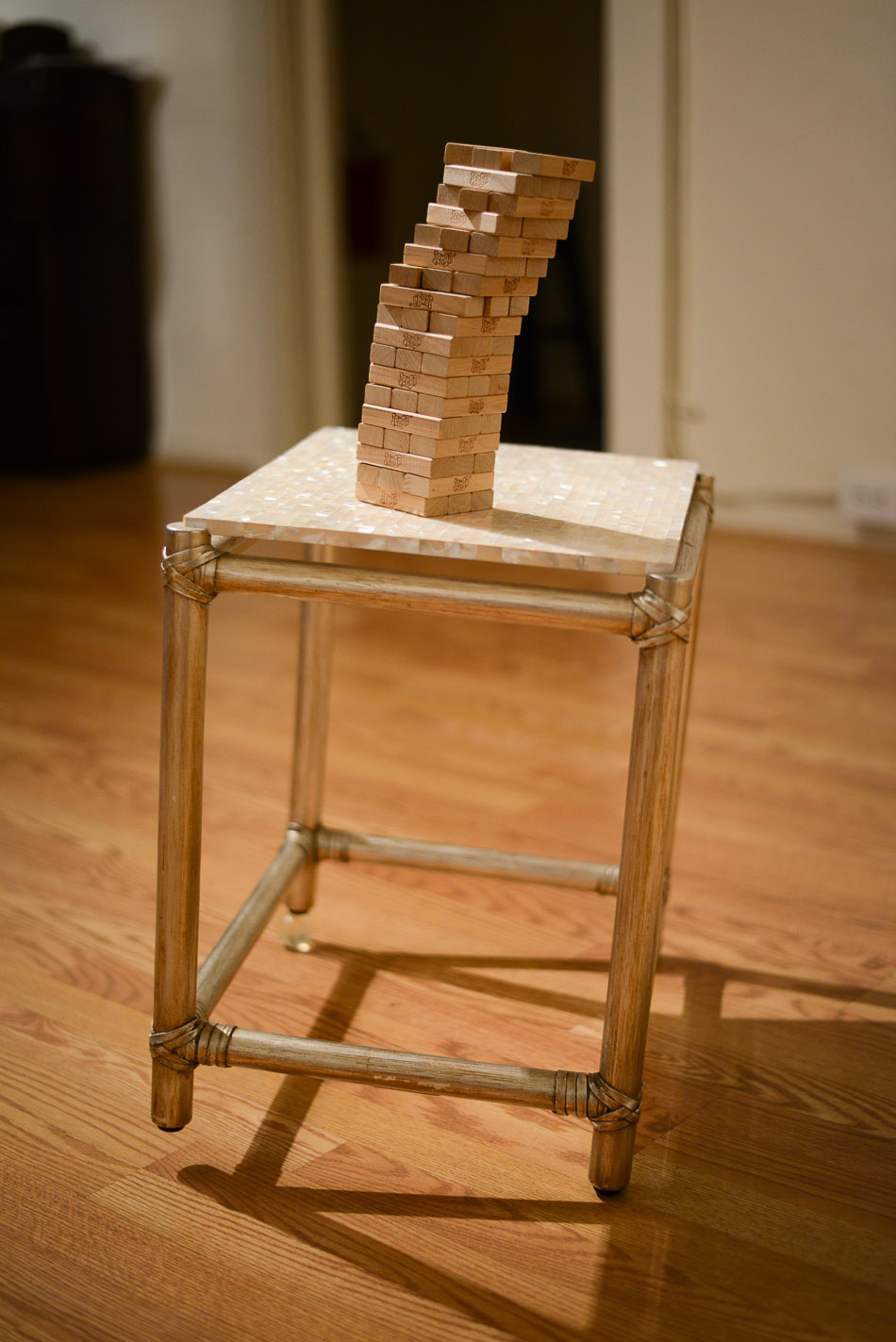 415.359.5692
415.359.5692
goodnightprojects@gmail.com
Join The Mailing List
There is No Telling What
 There is No Telling What
There is No Telling What
Carey Lin & Gregory Ito
March 9th – April 28th 2013
There is no telling what
In this exhibition of new assemblages and paintings by Gregory Ito and Carey Lin, the artists directly address the hybrid space of Heather and Charlie Villyard’s home gallery. Creating works solely from or in response to the objects in the space, Ito and Lin cross the invisible boundary separating the domestic from the public. The process of making the art was inherently invasive, as the Villyards allowed Lin and Ito unsupervised access to their basement storage, bathroom cabinets, kitchen sink, and other places a gallery visitor wouldn’t have the chance (or gall) to explore. While the chosen objects and tableaux have strong connotations for the homeowners, the artists formed their own, sometimes contradictory, narratives around the banal objects, remaking them as artworks.
The exhibition reveals hidden corners and stashed-away items, but ultimately tells the viewer as much about the aesthetic interests of the artists as it does about the homeowners themselves. By doubling elements of the home and its contents, Ito and Lin create a separate narrative space within Truesilver that borrows from reality to tell a fictitious story of the home gallery’s many uses and inhabitants.
During a month-long “residency” in the Villyards’ home, Ito explored the couple’s rooms, closets, cabinets, storage spaces and personal art collection to pull together a series of assemblages. The three works on display in There is no telling what play with ideas of balance, tension and contrast using fairly mundane, run-of-the mill objects likely to be found in any home: a jar of preserves, a bouncy ball, a Jenga set, a massager, a roll of wrapping paper, a yoga mat.
In 😮 (JENGA!), Ito places a stacked tower of Jenga blocks atop a silvery side table, one of the four legs tilted up to rest on a single bouncy ball. The precarious situation is a perfect metaphor for the difficult life/work balance well known to anyone running a home gallery. But the piece also escapes any overly serious interpretations – it’s Jenga, just way more difficult.
She’s Gifted presents another balancing act: a bright blue Tiffany’s box is held aloft by a similarly-hued stick resting atop a jar of cherries. Behind this angled triangle, a roll of tartan wrapping paper is mounted horizontally to the wall, the unfurled paper extending to the floor around the jar. The harmony of this arrangement and its strange combination of colors impart an initial visual impact, closely followed by the satisfying punning title.
Ito’s final contribution to the show, Bed, Bath and Beyond, relies on implied rather than actual physical tension. In it, a glass bong and a hand-held metal massager rest at opposite corners of a bright purple yoga mat. All three objects reference various methods of relaxing, but to use them simultaneously seems absurdly counterproductive. These are by far the most private objects on display, and yet they tell the viewer very little about the Villyards beyond the fact that they own these objects. Conclusions the viewer might draw from any of Ito’s chosen sculptural elements ultimately fall upon the viewer as a reflection of his or her own thing-based assumptions.
While Ito’s works repurpose household items as artwork, adding to the items’ intended functions, Lin physically duplicates the surroundings through painting. Months prior to the exhibition, the Villyards provided Lin with access to their home while they were out of town, giving her free range to investigate, photograph, and gather source material for paintings later made in the studio. After using domestic spaces in two previous bodies of work (Lin painted found images of hoarders’ homes and photographs of a gallery owner’s kitchen sink), she found the process of documenting the Villyards’ home in their absence an unnerving one – half intrusive, half fascinating.
Like Ito, Lin is interested in how the elements of a home shed light on its inhabitants, yet the paintings included in There is no telling what were ultimately chosen based on her own aesthetic attraction to specific photographs. These choices yield a series of disorienting, awkward and sometimes unrecognizable spaces, many of which are in the very room the exhibition is hung. Untitled (Floor) provides an overhead view of a threshold, the meeting place of two different floor surfaces. Untitled (Ceiling) is an underside view of a wooden box mounted to the living room ceiling next to a floral-patterned lamp. By focusing on these details and then exhibiting them on a vertical surface, perpendicular to their natural states, Lin creates a dissociative distance between reality and the painted image.
Other paintings capture minute details, simple objects and moments that would go otherwise unnoticed if not for time and care Lin has spent rendering them. A ceramic punch bowl, a cat toy, a cupboard of towels, the space under a sink – Lin paints these ordinary scenes and asks the viewer to notice the colors at play, the purposeful compositions, and the details that drew her to the image in the first place. In the end, the paintings raise the trappings of a domestic setting to the level of portraiture, a ridiculous and generous promotion.
The paintings are, in a way, a gift to the Villyards, honoring their home with portraits of its contents. But at the same time, Lin’s choices were not their choices – would they have opted to have a cluttered cupboard immortalized in oil? In some cases, Lin’s subjects are the very things Heather confesses to be most “cringe worthy” about her home, the objects or tableaux she would most wish to ignore. This fact emphasizes the way in which Lin’s – and Ito’s – works are now at a remove from their original settings. Taken from the home and repositioned within the gallery, they are now something else altogether.
That the works in There is no telling what fit so well together — and within their surroundings — is no surprise, but the pleasure the viewer gets from looking at them is. Mundane, household objects are given new lives as artworks, becoming meditations on color, light, balance, and form. The exhibition manages to treat its subject matter with both care and levity. It’s okay to giggle at the cat painting or the Jenga tower because it’s clear that both artists were having a good time as they put together their works for the show, all the while remaining respectful of the trust the Villyards bestowed upon them.
Ultimately, the exhibition brings up questions of identity shaped through objects. Do these artworks function as portraits of the Villyards and their home? Can a household be represented through its possessions and surroundings? The theme of doubling returns. Lin’s paintings and Ito’s assemblages ask such questions, but they also exist independently as engaging artworks filled with fiction, humor, and captivating juxtapositions.
Essay by Sarah Hotchkiss
